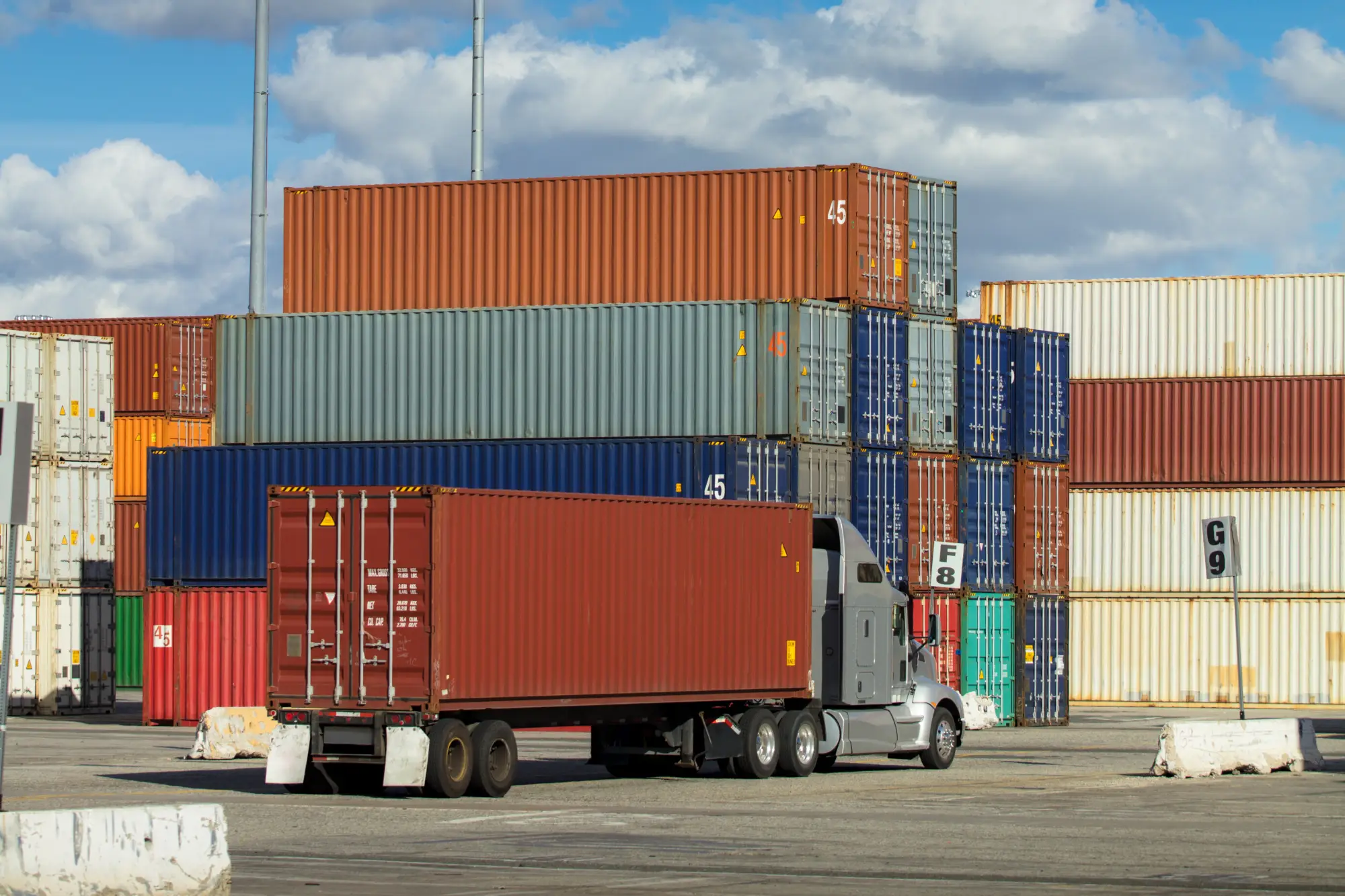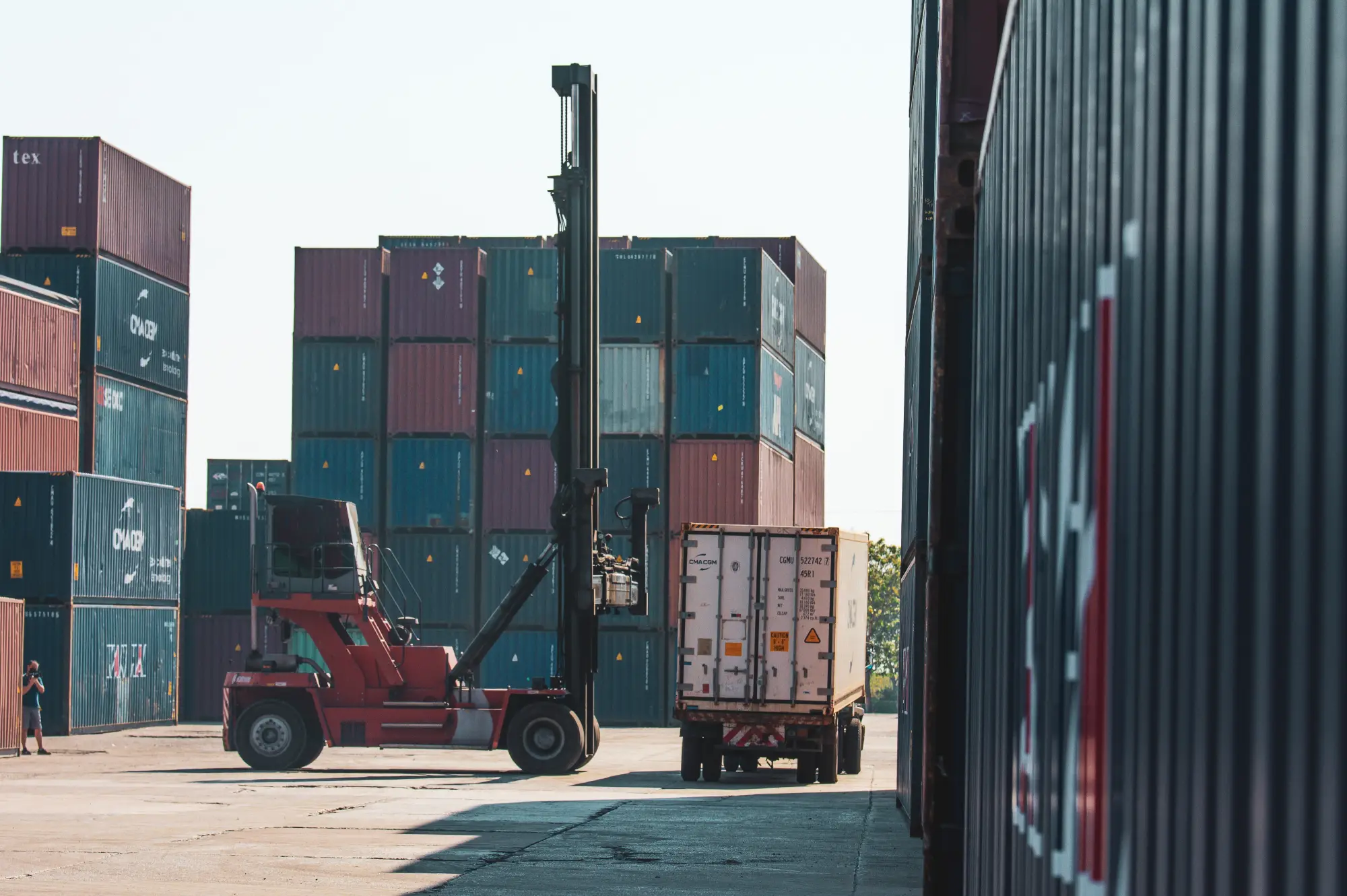As you prepare to penetrate the American market and ship your products across the United States, it’s essential to arm yourself with a comprehensive guide to the U.S. ground transportation network. While this resource is invaluable for those new to the American market, it’d also be helpful for U.S.-based merchants aiming to refine their logistics and streamline their supply chains. So, let’s put ourselves in the shoes of an international shipper and journey together, step by step, uncovering the various obstacles and challenges encountered along the way and then addressing each of them with practical solutions.
What is American Ground Transportation?
By definition, the American ground transportation system is a complex network of roads, railways, and logistics hubs designed to ensure smooth movements of goods within the United States from the point of origin to the customer. It primarily provides trucking, railroads, and intermodal services, where trucking, vital for its flexibility, dominates in providing door-to-door delivery and last-mile logistics. The extensive highway system facilitates this, connecting different regions efficiently.
On the other hand, railroads offer cost-effective solutions for longer distances, particularly for bulk goods. The U.S. boasts a widespread rail network linking major industrial and commercial hubs.
Intermodal services merge the benefits of trucking and railroads, ensuring a smooth transition of goods between various transport modes. This method is effective in reducing handling costs and improving transportation efficiency.

U.S. Ground Transportation Logistics Explained
For international sellers shipping products into the U.S., meeting the ground transportation system begins with the initial pick-up at a port or airport and ends with the last-mile delivery. Let’s move step by step:
Arrival and Clearance:
Once your goods arrive in the U.S., either at a major seaport or airport, the first step involves clearing customs. This process includes document verification and ensuring compliance with U.S. import regulations.
Port to Warehouse Transfer:
After clearance, goods are transferred to a nearby warehouse or distribution center. This short-haul journey is often handled by trucks, which offer the flexibility needed for such movements.
Inventory Management:
At the warehouse, your products are cataloged and stored. Inventory management at this stage is crucial for tracking and ensuring the availability of your goods for orders.
Order Fulfillment:
When an order is placed, warehouse staff pick and pack the required products. This step is vital for ensuring that the correct items in the right quantities are prepared for shipment.
Loading and Long-Haul Transportation:
Packed goods are then loaded onto trucks or trains, depending on the distance and cost considerations. For long distances, rail is often more economical, while trucks offer more route flexibility.
Intermodal Transfers (if necessary):
If your shipment requires a combination of truck and rail transport, intermodal services come into play. This involves transferring shipping containers from trucks to trains or vice versa, optimizing the transport process.
Last-Mile Delivery:
The final step is last-mile delivery, where goods are transported from a local distribution center to the final destination. This is typically handled by smaller trucks, ensuring timely and precise delivery to the end customer.
Each step in this process is integral to the efficient movement of goods through the U.S. ground transportation system, requiring careful coordination and planning for international shippers.

Challenges Faced by International Sellers
International companies may encounter several challenges when shipping across the U.S., each requiring strategic planning and management.
Customs and Regulatory Compliance:
One of the primary hurdles is dealing with customs and ensuring compliance with U.S. import regulations. The process can be daunting due to its complexity and the need for meticulous documentation. Non-compliance can result in delays, fines, or even seizure of goods.
Logistics Coordination:
Coordinating the movement of goods from ports to final destinations involves multiple transportation modes. Ensuring smooth transitions between these stages, especially in intermodal transport, demands careful planning and synchronization.
Cost Management:
Balancing cost-efficiency with timely delivery is a constant challenge. While rail transport might be cost-effective for long distances, it lacks the flexibility of trucking. Conversely, relying solely on trucking can escalate costs, particularly for cross-country shipments.
Managing Transit Times:
Transit time is a critical factor for shippers, with delays impacting the entire supply chain. Factors like traffic congestion, weather conditions, or logistical bottlenecks can lead to unforeseen delays.
Last-Mile Delivery Complexities:
Last-mile delivery, often in urban areas, can be challenging due to traffic, restricted delivery windows, and the need for smaller delivery vehicles. This stage is crucial as it directly impacts customer satisfaction.
Inventory Management and Storage:
Efficient inventory management at warehouses is vital. Mismanagement can lead to overstocking or stockouts, affecting order fulfillment and overall cost.
Adapting to Market Demands:
The U.S. market is dynamic, and shippers must be adaptable to changing consumer demands and trends, requiring flexible and responsive logistics strategies.

Ways to Optimize Ground Supply Chains
Efficient ground supply chains are synonymous with cost-effectiveness, speed, and reliability. Here are some practical recommendations for international shippers to optimize logistics:
Leverage Technology:
Utilize advanced logistics software for tracking, inventory management, and route optimization. This technology can provide real-time updates and predictive analytics, enhancing decision-making and efficiency.
Build Strategic Partnerships:
Establishing solid relationships with reliable logistics providers, warehouses, and local carriers can streamline operations. Collaboration can lead to better rates, improved service quality, and faster problem resolution.
Diversify Transportation Modes:
Don’t rely on a single mode of transportation. Combining trucking, rail, and intermodal services can balance speed, cost, and flexibility, adapting to different shipping needs.
Prioritize Efficient Routing:
Efficient route planning is crucial to minimize transit times and fuel costs. Consider route planning factors like traffic patterns, weather, and delivery windows.
Implement Lean Inventory Practices:
Adopting lean inventory techniques can reduce storage costs and minimize stockouts or overstock situations. This approach ensures a more responsive and agile supply chain.
Final Note:
The U.S. ground transportation system is a complex network, combining trucking, railroads, and intermodal services. This complexity poses many challenges, including regulatory compliance, logistics coordination, cost management, and ever-changing market demands. To handle them, it’s crucial to leverage technology, diversify transportation modes, prioritize efficient routing, and implement lean inventory practices. No less important is building strategic partnerships with reliable and trusted logistics providers like U.S. InBound. It can become a key factor in overcoming these challenges, providing expert guidance and support for efficient and effective ground shipping across the U.S.




